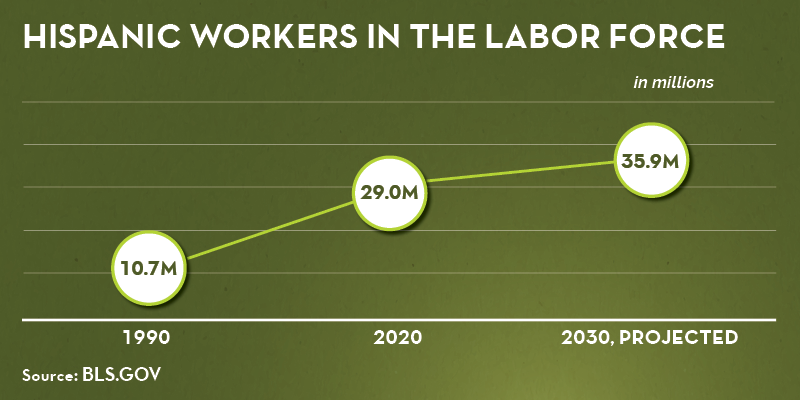Latinos represent the fastest growing group in the US economy, but only a fifth of them consider themselves financially healthy according to a new report released by consulting firm McKinsey & Company.The analysis details that in the last decade Hispanics represent the fastest growing portion of the gross domestic product (GDP) of the United States. If they were a country, they would be the third in growth rate after China and India.

Consumption in Latino households reached a cumulative market level of $1 trillion in 2021 (“trillion”), with an annual growth rate of 6% over the past 10 years.Yet Latino savers have only one-fifth the median wealth of their non-Latino white counterparts, and their savings have been depleted. Currently almost half of Latinos have little or no retirement or savings.Only 23% consider themselves financially healthy in 2022 compared to 35% of non-Latino whites.However, the net wealth of Latinos is increasing at a faster rate (9%), compared to 4% for non-Latino whites, and that is narrowing, but not yet closing, the gap with their counterparts.
On the other hand, Latino consumers are more dissatisfied than non-Latino whites (28% vs. 21%) mainly due to the high prices and low quality of the products. This dissatisfaction ranges across all product categories, from food and beverages to financial products, which may indicate unresolved needs that impact their daily lives.
For Pérez, at the gates of a possible recession, “focusing on the Latino community can open important spaces for growth in different sectors.” Stated Lucy Pérez, majority partner at McKinsey & Company.
Closing the gap for Latinos as workers, consumers, business owners, and savers or investors could have a multi-billion dollar impact, with more than a million more Latinos in the middle class.Plus, $109 billion in revenue at stake for corporations and 744,000 more Latino-owned businesses along with 6.3 million new jobs.
The expert explained that Latinos are an economic engine for the country, but currently have unsatisfied needs of more than $100 billion. This figure , reaches $660 billion if the parity gap against non-Latino whites is taken into account according to the study titled “The State of the US Latino Economy: Determined to Prosper ”.
Highest consumers of food and rent
Pérez stressed that Latinos are potential consumers because their spending is higher than that of other groups with a similar income level, driven mainly by the fact that their average household is larger. Primarily Hispanics spend more on food and rent and are more cost conscious than their counterparts, however, marketing spend to Latinos does not reflect this.
“Brands are not very aware of how crucial it is to understand the Latino consumer,” Pérez said. She added that most companies are not investing in having a personalized strategy focused on better meeting the needs and preferences of Latino consumers, she emphasized. However, she did mention artists with JLo Beauty, which has created a wide range of makeup for different skin tones, and Target, which promotes brands made by Latino-owned companies that aim to tap into the strong sense of community that characterizes the community. to the Latino community.

Latinos are also conscious of their impact, choosing brands that value the environment and their employees, all of which make them more influential than their income levels would suggest. The report also shows the resilience of the Hispanic business community, detailing that 80% of Latino companies stabilized their sales at levels of 2019, before the pandemic, in the second half of 2021.
The study details that Latinos still face barriers in the workplace due to discrimination, implicit prejudices or lack of opportunities to advance in new roles. If they were represented in the workforce in line with their share of the population, and received the same pay as non-Latino whites, they would receive an additional $281 billion in annual revenue that could be used to fuel economic growth.
